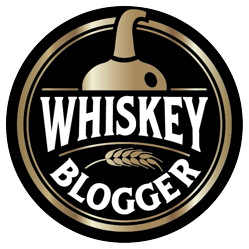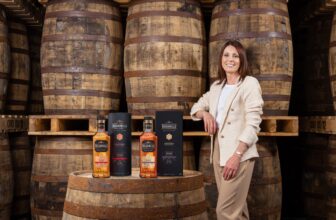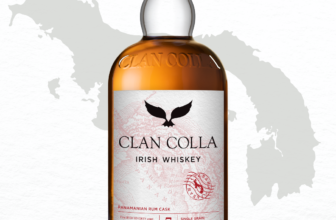A Beginners Guide to How Irish Whiskey is Made
How is Irish whiskey made?
How is Irish whiskey made? Do you already know? If so, this article is not really aimed at you. Instead, I’m writing it for all the people who don’t know, who would like to know but are afraid to ask as they assume that it’s something that everyone else knows!
There’s no such thing as a silly question so with that in mind, I’ll do my best to write a simple guide for beginners demystifying how Irish Whiskey is made.
Irish Whiskey Grain. Milling and Malting
The very, very simple version is that malted and sometimes some un-malted Irish Grain (normally, but not always barley) is coarsely ground into a course flour called grist. Malted grain is grain that has been moistened for a few days to fool the grain into germination which is a process in which the grain releases enzymes to begin converting the starch in the grain to sugar.
Once germination commences, it is immediately stopped in its tracks by quickly drying the malted grain in a large closed kiln where the smoke from the heat souce which is now natural gas (previously Coal / anthracite) never makes contact with the malted barley . The malted grain used for Scotch whisky is often dried directly by the smoke from turf or peat fires. In the traditional making of Irish whiskey, no smoke makes contact with the grain and that is why Irish whiskey does not have the peaty smell and taste associated with many Scotch whiskies. In recent years there have been peated whiskeys made in Ireland such as Connemara, but these are generally exceptions to the rule.
Mashing and Fermentation
The grist of ground malted or malted and unmalted grain is then added to clear Irish water and heated to approximately 60 degrees C. This forms a watery, sugary soup as the hot water and enzymes in the malted grain release the sugar content from the starch in the crushed grain. After a few hours, the soup, known as mash is allowed to cool down and the liquid is filtered and drained. Some some yeast is added to the sugary liquid which is not known as wort. The yeast causes the wort to froth and bubble as it converts the sugar content to alcohol. After two or three days, all the sugar has been converted by the yeast and the froth dies down to leave a like warm, beer like substance of about 8% alcohol by volume (ABV) called the Wash.

Mashing extracts the sugar from the grain, before we add yeast to convert the sugar to beer.
Distillation into clear Irish Whiskey Spirit
This wash is then distilled and distilled again two or three times in either a copper pot still or a continuous column still into a clear vodka like new make whiskey spirit with an ABV of about 85%. Only the heart or centre portion of each distillation run goes forward to the second and third distillation stage. The beginning and end of each distillation run known as the heads and tails are put aside and are recirculated back into the still from where they came. This assists in maintaining consistency of character and flavour from each pot still used. Generally the early part of the heads run is di carded as it will contain some unwanted and unpleasant compounds.

Maturation into Irish Whiskey
This whiskey spirit is then diluted with pure water down to about 65% before being filled into oak casks for at least 3 years to slowly mature into Irish Whiskey. The type of wood in the barrels and their previous use if any, contribute in a major way to the character, colour, nose and flavour of the new whiskey.

Bottling for Sale as Irish Whiskey
After aging for at least 3 but often up to 20 years, the matured Irish whiskey is again diluted with pure Irish water down to a drinking strength of about 40%ABV before being bottled for distribution and sale. Sometimes a special whiskey is left at a “Cask Strength” of 50% to 60% to present a less diluted and more flavoursome but stronger drink for aficionados. These cask strength Irish Whiskeys are generally not recommended for Irish Whiskey beginners who will probably find them over powering, expensive and difficult to drink because of their higher alcohol content.
The Start of your Irish Whiskey Journey
So, there you have it! Add crushed malted grain to water. Heat it up to release the sugars. Add yeast to ferment and convert it to beer. Distil the beer into clear Irish whiskey spirit and age or mature the spirit in oak barrels for at least 3 years to make Irish whiskey!
This whiskey spirit is then placed in oak casks for a least 3 years to mature into whiskey. The longer it spends in the barrels, the darker the colour and the more character and flavour it gains.

Simple? Well, yes and no. Whiskey is a combination of grain, water, energy, wood and time. But there are variations and nuances in each of these elements that make all Irish whiskeys unique.
Knowing a little bit more about the different elements that go into making Irish whiskey will really let you appreciate and understand quite easily and quickly where all of the various looks, noses, tastes and mouthfeels of the different types of Irish whiskey come from. This little bit of knowledge is what will turn Irish whiskey from something you drink into something you can love and appreciate for the rest of your life.
So in the next few articles, I’ll deal with each of these stages in Irish Whiskey making in much more detail. Don’t worry! I’ll start where we left off here for Irish whiskey beginners and will take you further along your journey to becoming an Irish Whiskey aficionado just like me!






